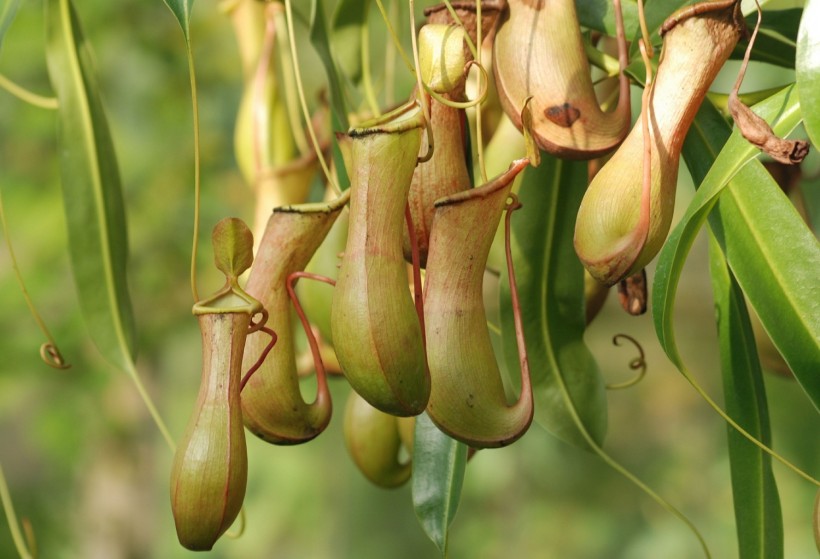The predatory mechanisms of the slender pitcher plant, Nepenthes gracilis, a native of the Borneo jungles, were revealed in a study published in the journal Biology Letters. The cup-shaped plant traps the insects on the underside, flinging them into the pitcher. It uses the rain to trap its prey, whose digestive juices consume it.
Nepenthes Gracilis Trapping Insects Mechanism
Nepenthes gracilis can trap its prey by using an external energy source. For this species, it uses rain to perform such fast movement without having to incur any energy costs itself. The researchers discovered the spring at the back of the tubular pitcher wall, rather than in the lid.
Study lead author Anne-Kristin Lenz said that looking at the pitcher shape would make someone think that the deformation occurs at the smallest cross-section, the transition point from lid to pitcher tube. However, she confirmed that it actually occurs further down at the back of the pitcher tube.
The location makes the spring direction-dependent, which means that if rain falls on the lid, it will quickly close, releasing insects into the trap below.
However, there is more resistance as the lid rises, indicating that the trap is ready to capture its next victim. The spring's off-center position keeps the lid from twisting or tilting, making it more stable and allowing more energy to be devoted to the critical closing action.
The researcher believes that the design could inspire alternative energy engineers.

pitcher plant nepenthaceae
ALSO READ: Never-Before-Seen Carnivorous Plant Hides Underground and Traps Prey
Nepenthes Gracilis on Optimizing Geometric Structures in Biology
Pitcher plant traps are light but strong, and the Nepenthes gracilis species transmit impact energy with outstanding efficiency by using slight changes in trap shape. The plants can provide information on optimizing geometric structures that would save material and weight while maintaining a functional spring. The springboard trapping mechanism may even be used to inspire the development of new mechanical devices for harvesting energy from rain or hail.
In plants, geometrical optimization is commonplace for structural stability and damage resistance, and even minor changes to the cross-sectional shape can have significant effects. It could be improved further by modifying the mechanical tissue properties. Plants can easily fine-tune tissue properties by adjusting their cell walls' thickness, structure, and chemical composition.
The relative investment of Nepenthes species in their traps, alternative trapping mechanisms, and associated morphological components may explain why N. gracilis pitchers are less prone to turgor loss and temporary lid drooping during hot days.
More in-depth studies of pitcher tissue composition are required to determine whether structural components are distributed evenly throughout the pitcher or are concentrated in specific structures such as the extremely rigid peristome.
The structural reinforcement of N. gracilis pitchers has a two-to-three-times longer pitcher lifespan. Carnivorous plants are thought to be at the slower-growing, more resource-intensive, and longer-lived end of the leaf economic spectrum.
Nepenthes gracilis was first studied in 2012, and the research was published in PLoS ONE. The scientists tested their hypothesis on the species using a hospital drip to simulate rain. They recorded its effect on a captive colony of ants foraging on the nectar under the lid.
RELATED ARTICLE: Cambodia Ministry Warns Against Picking Carnivorous Penis Plant Flowers for Blogs; Pitcher Plants Already Vulnerable to Extinction
Check out more news and information on Environment in Science Times.














